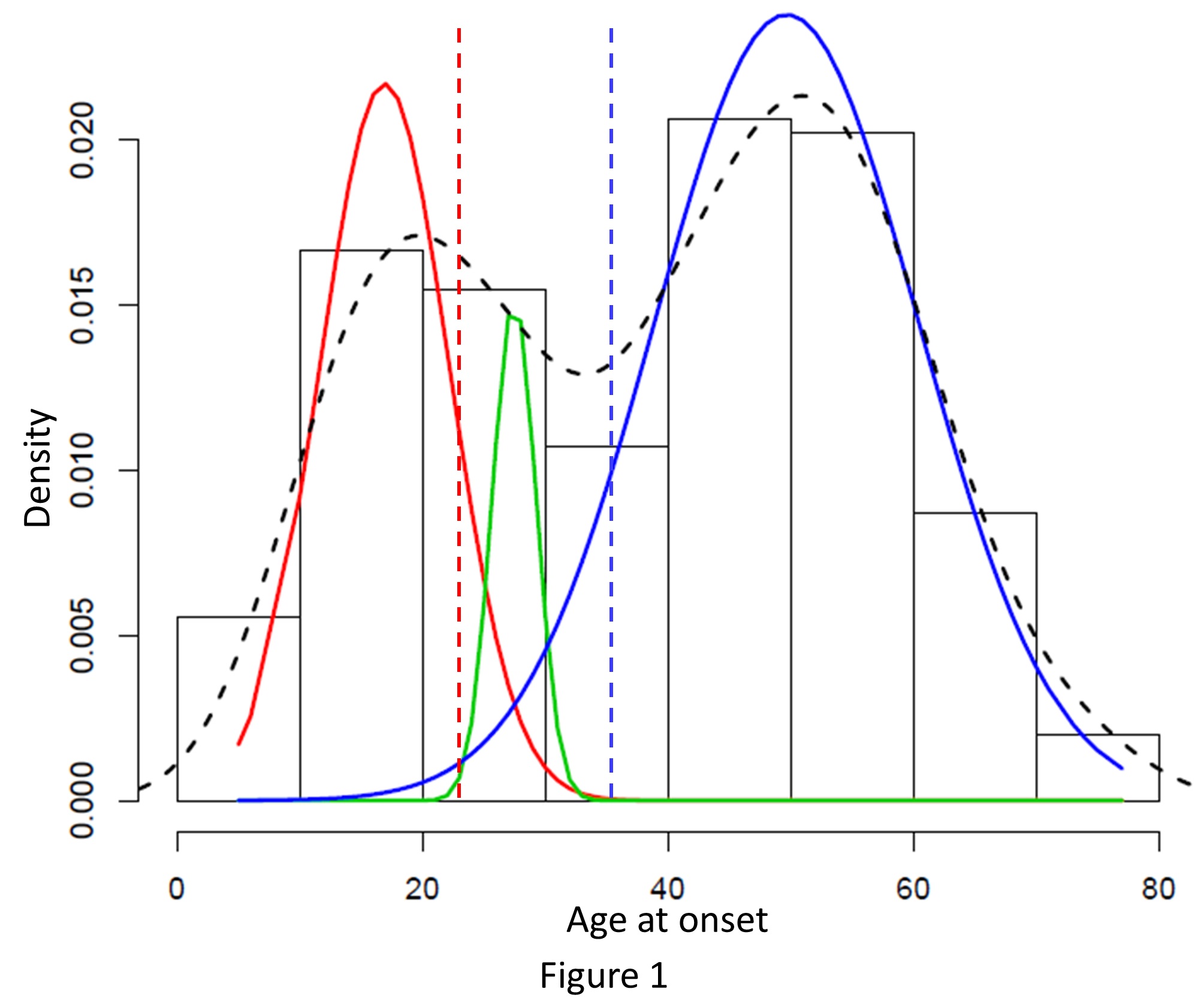Session Information
Date: Sunday, October 7, 2018
Session Title: Tremor
Session Time: 1:45pm-3:15pm
Location: Hall 3FG
Objective: To explore the distribution of the AAO of essential tremor based on mathematical modeling and ascertain differences in the clinical features of subgroups.
Background: Essential tremor (ET) is frequently reported to have a bimodal distribution of age at onset (AAO) with possible variability in the phenotypic characteristics based on the AAO.
Methods: Two hundred and fifty-two patients with ET diagnosed on the basis of the National Institutes of Health collaborative genetic criteria were recruited and evaluated. Finite-mixture modeling was performed to identify the subgroups of the cohort based on AAO.
Results: Three subgroups were defined: early onset (EO): AAO≤ 22 years, n=63, intermediate onset (IO): 23≤AAO≤35 years, n=43 and late onset (LO): AAO≥36 years, n=146. There were no differences related to family history or responsiveness to alcohol. The EO subgroup had significantly higher prevalence of upper limb and lower limb tremor. Head tremor and voice tremor was more prevalent in the IO and LO subgroup. Cerebellar signs showed a significant increase in prevalence with an increase in AAO.
Conclusions: ET shows significant phenotypic variability based on the AAO. Patients with an early AAO are more likely to develop an appendicular tremor. Whereas, the probability of developing an axial tremor and cerebellar signs increases as the age at onset increases.
To cite this abstract in AMA style:
S. Prasad, A. Lenka, K. Jhunjhunwala, K. Bhalsing, P. Pal. Phenotypic variability of essential tremor based on the age at onset [abstract]. Mov Disord. 2018; 33 (suppl 2). https://www.mdsabstracts.org/abstract/phenotypic-variability-of-essential-tremor-based-on-the-age-at-onset/. Accessed December 29, 2025.« Back to 2018 International Congress
MDS Abstracts - https://www.mdsabstracts.org/abstract/phenotypic-variability-of-essential-tremor-based-on-the-age-at-onset/

